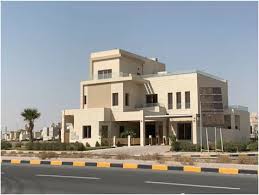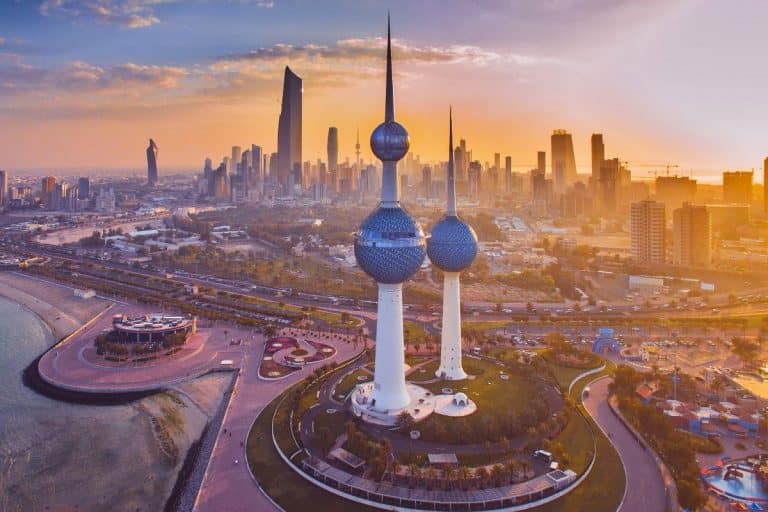Kuwait’s real estate sector is undergoing a remarkable transformation. Traditionally known for its luxurious developments and expansive urban projects, the industry is now embracing green business models to align with global sustainability goals. This shift is not only driven by environmental responsibility but also by a growing demand from investors and residents who prioritize eco-friendly living. The integration of green principles into real estate is redefining the way properties are developed, managed, and marketed in Kuwait.
The adoption of green business models is reshaping the architecture, infrastructure, and operational strategies of real estate projects. Developers are increasingly incorporating sustainable materials, energy-efficient systems, and smart building technologies to reduce the ecological footprint of their projects. From residential towers to commercial complexes, Kuwait is witnessing a surge in constructions that emphasize resource conservation, reduced emissions, and long-term economic efficiency.
Rising Awareness Among Investors and Consumers
One of the key drivers of the green transformation in Kuwait’s real estate sector is the growing awareness among investors and consumers. Modern buyers are no longer focused solely on aesthetic appeal or luxury. Instead, they evaluate properties based on their sustainability credentials, energy efficiency, and long-term operational savings. Investors are attracted to eco-conscious projects because they promise better value retention and reduced environmental risks over time.
For instance, residential complexes that use renewable energy sources, such as solar panels, and integrate water-saving technologies, appeal to a generation of homeowners who value sustainability. This shift in consumer preference is compelling developers to innovate and align their offerings with green standards.
Innovative Architectural Designs for Sustainability
Architecture plays a critical role in Kuwait’s green real estate transformation. Developers and architects are moving beyond conventional designs to create structures that optimize natural resources and minimize environmental impact. Modern buildings incorporate passive cooling and heating systems, natural ventilation, and intelligent shading techniques to reduce energy consumption.
Urban planners are also integrating green spaces within residential and commercial complexes. Rooftop gardens, vertical greenery, and landscaped courtyards not only enhance aesthetic appeal but also improve air quality and reduce the urban heat island effect. These designs are creating healthier, more livable environments while maintaining the luxurious standards that Kuwait is known for.

Energy Efficiency as a Core Strategy
Energy efficiency has become a core strategy for Kuwait’s real estate developers. The sector is increasingly investing in advanced building management systems that optimize energy usage. LED lighting, smart thermostats, and automated energy monitoring systems are becoming standard features in modern developments.
Additionally, solar energy adoption is on the rise. Many new projects are incorporating photovoltaic panels to harness the abundant sunlight in Kuwait, reducing dependency on conventional energy sources. By focusing on energy efficiency, developers are able to offer lower utility costs to residents while contributing to the country’s broader sustainability goals.
Embracing Green Certifications
To formalize their commitment to sustainability, real estate companies in Kuwait are pursuing green building certifications. These certifications, such as LEED or local sustainability standards, provide independent validation of a building’s environmental performance. Certified projects gain a competitive advantage in the market and attract environmentally conscious tenants and investors.
Green certification also encourages developers to consider lifecycle impacts, from construction materials to waste management and energy usage. This holistic approach ensures that sustainability is integrated into every stage of a project, rather than being an afterthought.
Smart Technologies for Sustainable Living
The adoption of smart technologies is another pivotal aspect of green real estate in Kuwait. IoT devices, sensors, and automation systems are being implemented to monitor energy and water usage, reduce waste, and enhance residents’ comfort. Smart buildings can adjust lighting, cooling, and heating automatically based on occupancy, significantly reducing unnecessary energy consumption.
Moreover, digital platforms allow residents to track their energy usage and participate actively in sustainability initiatives. This technological integration not only makes buildings more efficient but also fosters a culture of environmental responsibility among occupants.
Water Conservation and Waste Management
Water scarcity is a pressing issue in Kuwait, making water conservation a crucial component of green real estate. Developers are adopting innovative strategies to minimize water usage, such as low-flow fixtures, greywater recycling, and rainwater harvesting systems. These measures reduce dependency on municipal water supplies and promote sustainable living.
Similarly, waste management is being prioritized in modern developments. Construction waste is increasingly recycled or repurposed, and residential complexes implement robust waste segregation and recycling programs. These initiatives minimize environmental impact and demonstrate the sector’s commitment to long-term sustainability.

Government Policies Driving Green Initiatives
Government policies and regulations play a significant role in promoting green real estate in Kuwait. Authorities are encouraging sustainable construction practices through incentives, regulatory frameworks, and strategic planning guidelines. Policies that support energy-efficient buildings, renewable energy adoption, and environmentally friendly urban planning create a favorable environment for developers to invest in green projects.
Public-private partnerships are also emerging to facilitate sustainable urban development. These collaborations enable large-scale projects to integrate green technologies and infrastructure, benefiting both the economy and the environment.
Economic Advantages of Green Development
Green business models are not only environmentally beneficial but also economically advantageous. Sustainable developments typically have lower operating costs due to reduced energy and water consumption. They also enjoy higher property value retention and can attract premium tenants willing to pay for eco-friendly amenities.
Investors are recognizing that green projects mitigate risks associated with regulatory changes, climate challenges, and resource scarcity. By integrating sustainability into real estate portfolios, developers can ensure long-term profitability while contributing to national and global environmental goals.
Community and Social Impact
The shift toward green real estate also has significant social benefits. Sustainable developments create healthier living environments, with improved air quality, natural lighting, and access to green spaces. This contributes to residents’ physical and mental well-being.
Moreover, green buildings encourage community engagement through shared spaces, educational initiatives, and sustainable lifestyle programs. Residents become active participants in environmental stewardship, creating a culture of responsibility and collaboration.
Challenges and Opportunities
Despite the positive momentum, the transition to green business models presents challenges. Initial construction costs for sustainable projects can be higher, requiring developers to balance affordability with environmental standards. Additionally, the sector must address knowledge gaps and skill development to implement advanced green technologies effectively.
However, these challenges also present opportunities. Innovative financing models, government incentives, and increased consumer demand for sustainable living provide a fertile ground for growth. Companies that successfully navigate these challenges are likely to emerge as leaders in Kuwait’s evolving real estate landscape.
Looking Ahead: The Future of Green Real Estate in Kuwait
The future of Kuwait’s real estate sector is increasingly green. Developers, investors, and policymakers are aligning their strategies with sustainability, creating a resilient, environmentally responsible market. Technological advancements, combined with innovative design and energy efficiency, are setting new standards for urban development.
As awareness grows and green business models become the norm, Kuwait is poised to become a regional leader in sustainable real estate. The integration of environmental, social, and economic considerations ensures that the sector contributes positively to the country’s growth while preserving resources for future generations.
Kuwait’s journey toward sustainable real estate demonstrates that luxury and environmental responsibility can coexist. By embracing green models, the country is not only reducing its ecological footprint but also creating vibrant, resilient, and future-ready communities. The commitment to sustainability is transforming the real estate sector into a powerful driver of positive change, setting a benchmark for other countries in the region.
With continued investment, innovation, and collaboration, Kuwait’s real estate sector will thrive in a world where green business models are not just preferred but essential. The shift toward sustainability is not a temporary trend but a permanent evolution that promises economic, social, and environmental benefits for all stakeholders involved.
Do follow Gulf Magazine on Instagram.
Also Read – Qatar’s Sustainable Tourism Revolution: Green Initiatives Transforming the Future



